| Reviews | |
|
|
Focus|Santa
Fe Featured Artist: Troy Williams Expresssing
Situations and by Wolfgang Mabry Sculptor
Troy Williams unites the |
|
Beyond
all the narrative potential of the three obvious physical dimensions
of Troy Williams' sculpture there are many other considerations
that contribute greatly to the enjoyment, appreciation, and understanding
of his entrancing 360-degree works of figurative art. Some artists insist on leaving these entirely up to each viewer, but Williams is glad to enrigh the experience by inviting the viewer in for a little insight into the artist's intention. Certain ambiguities and unintended provocations might otherwise arise, as he uses original combinations of materials or ideas in highly original ways. For the sophisticated clientele of Glenn Green Galleries, Williams specializes in figurative and facial sculptures hewn from fallen woods he finds while running near his home in the mountains of north-central New Mexico. In the past he worked with exotic woods, but now avoids them in a desire to protect the people, plants and animals that depend on a vibrant, healthy and unexploited local ecosystem. Finding dead and downed wood also introduces an element of serendipitous chance into the sculptor's process of selection and inspiration.
Growing up in an Indiana farming community, his dad a family practice doctor and his mother an artist, he has always felt an affinity for the earth and especially its mountains. Williams initially came west to study agriculture at Fort Lewis College in Durango, Colorado, attracted there by a setting where his athletic nature could find full expression. His interest in agriculture gave way to his love of the mountains. In order to continue living in them and enjoy the hiking, climbing-, and running he also loved, he worked for several years in a solar business, progressing from manufacturing to installations to design. On a fortuitous errand for a cousin back home, Troy happened into silversmithing and began producing simple, hammered ear cuffs. At this point the artistic nature that he had earlier suppressed in favor of athletics began to emerge strongly, and he expanded into more complex designs as he mastered goldsmithing and lapidary. Another quantum leap occurred when he made his first copper face for a pendant. He couldn't wait to see the face on a larger scale and was eager to learn another art.
A quality of segmentation or fragmentation characterizes Williams' sculptures and provides great visual satisfaction along with intriguing thematic provocation. One is struck by the beautiful outlines that might never be apparent had he not removed segments or created interior voids expressly to reveal them. When sculpting a face, Williams focuses on aspects that are mask-like, floating, and alive with contours that might not be visible' were the artist to sculpt the full head. The segmentation in his exquisitely refined female figurative works incorporates solids, hollows, and curvilinear elements for reasons that are at once artistic, philosophical, and experiential. Besides attending basic college art classes, to understand more fully the human figure Williams spent a summer in Europe studying figurative sculpture. He also spent time with an orthopedic surgeon, learning musculature by starting with a skeleton then building out the muscles individually in clay. He later spent more time studying with a forensic scientist, all towards having the correct figure as a foundation on which to exercise his artistic intention.
"With those images hovering in mind, another female image struck me. In a coffee shop the cover of a regional tabloid showed a photo of a woman's torso with the words 'Roe v. Wade' written on the flesh of her midriff. Yes, we are lucky to live in a country where women are less bound than elsewhere, but isn't it also true that a segment of our society is for religious/moral reasons trying to bind women by taking away their right to choice? This is not a pro-choice statement on my part. "The point is that we are all bound by our environment and/or society in many ways, and that throughout most of the world, women are bound much tighter than men. The original name for this piece was 'Bound,' but when looking at it, I get the same feeling as I do from looking out my back door. I look at those beautiful mesas with their red rock and green life and can feel a harshness about the air. The life-giving energy of Mother Earth is also bound, not by wire or society, but by drought. So now I call this piece "Drought." Troy Williams's sculptures are about situations and beings expressed in human form. Beautiful and filled with meaning, they reveal rare genius, and should not be missed. |
|
|
|
|
Welcome | New Work | Reviews | Gallery | Liturgical | Commissions | Contact
© Copyright 2002 Troy Williams. All rights reserved.
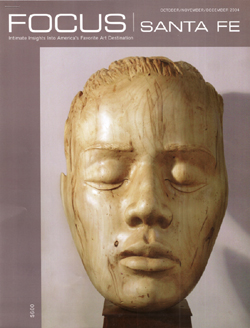
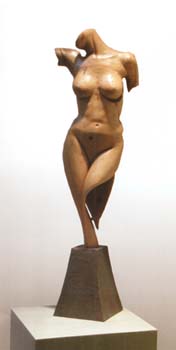

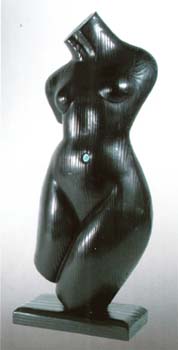
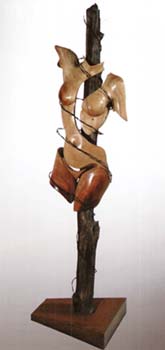
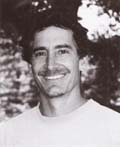 Troy
Williams's sculptures can be seen at Glenn Green Galleries and Sculpture
Garden in Tesuque five miles north of Santa Fe. Take Highway 285
to County Road 73 and travel one mile to #136 Tesuque Village Road,
the first entrance south of Tesuque Village Market. Hours: 10:00-5:00
Monday Saturday, by appointment Sunday. (505) 820-0008. His work
can be seen in downtown Santa Fe at 50 East San Francisco Street,
where Glenn Green Galleries maintains art displays in their large
street-level showcase.
Troy
Williams's sculptures can be seen at Glenn Green Galleries and Sculpture
Garden in Tesuque five miles north of Santa Fe. Take Highway 285
to County Road 73 and travel one mile to #136 Tesuque Village Road,
the first entrance south of Tesuque Village Market. Hours: 10:00-5:00
Monday Saturday, by appointment Sunday. (505) 820-0008. His work
can be seen in downtown Santa Fe at 50 East San Francisco Street,
where Glenn Green Galleries maintains art displays in their large
street-level showcase.